Categories
- Decisions & Planning (1)
- Foundation (4)
- Framing (1)
- Insulation (1)
- Subfloor (3)
- Tiny Living (1)
- Trailer (4)
- Uncategorized (3)
Posted on March 9, 2015
When building a house, there are so many decisions you have to make, so when it came to choosing a tiny house insulation, I researched, researched, researched. The types of insulation, and the pros and cons of each. I found that some builders decide to use standard fiberglass batt insulation for cost effectiveness and availability, yet others decide to use blow-in spray foam insulation to maximize insulation value bang-for-the-buck. The number of insulation types is surprisingly lengthy and. . . creative. I think the most unusual type of insulation that I stumbled across was the process of utilizing phonebooks to insulate walls of your home. Really? Do they even still make those anymore? I guess so, because that’s a thing.
For me, choosing an insulation was primarily about the health of my family, which I’ve tried to be mindful of that when choosing some of my tiny house building materials. Had health not been my first priority, I would have chosen to use closed cell spray foam insulation, which touts an R-value of almost 7 per inch, and adds to the structural stability of home. The flip side of spray foam insulation is that there are many chemicals that form it (it’s a polyurethane foam). These chemicals continue “off-gas” inside of the structure after it’s applied and set, and can cause adverse health side-effects, like disrupting the respiratory, digestive or endocrine systems. Because this method of insulation is such a relatively new technology, we’ve not been able to fully measure what the effects on human health can be. I guess we’ll see in 50 years. We’ve been wrong before (helloooo, asbestos) so I’d decided to play it safe and choose a safer alternative, and that alternative was a sustainable, natural choice – sheep’s wool.
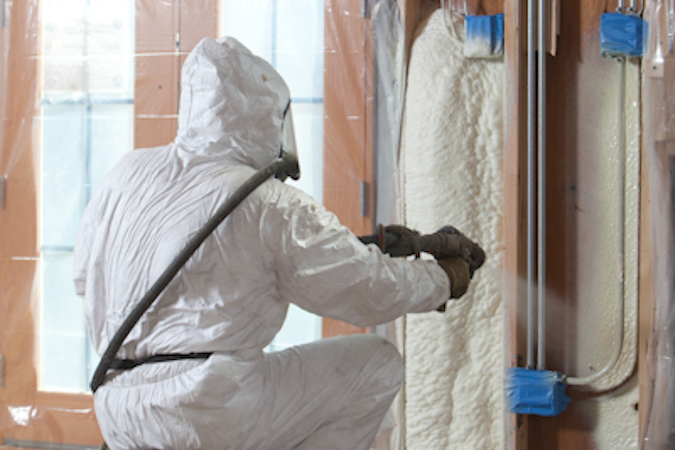
Spray-foam insulation installer geared up in protective gear. That doesn’t look safe.
Okay, so I know that I can’t make all of my tiny house building supplies toxic-free, but for me it’s about making reasonable decisions to build a more healthy structure . . .where I can. Oregon Shepherd creates a sustainable form of insulation by clipping wool from their sheep, and then treating the wool with a naturally-based protein and borax solution to serve as an insect-repellant and fire retardant. Here are some other pros of Oregon Shepherd’s wool insulation:
There you go. Yes, the insulation was much more expensive than your typical fiberglass insulation (and it even has a similar R-value), but I felt for the health benefits and moisture-managing capabilities, it’d be worth it. Later on, when we’d have a show-down with a rainstorm, I’d come to be grateful that we opted for wool insulation, especially in the subfloor!
Overall, my dealings with Oregon Shepherd were pretty positive too. I had to call and leave a message a couple of times, but the customer service representative, Margaret soon returned my call and emailed me a quote for enough wool to cover my estimated square footage. Before I knew it, I received a couple of boxes of the Permaloft blow-in insulation for our floor, which was actually a quick ship considering it was delivered to us in Atlanta, Georgia all the way from the Pac-NW!
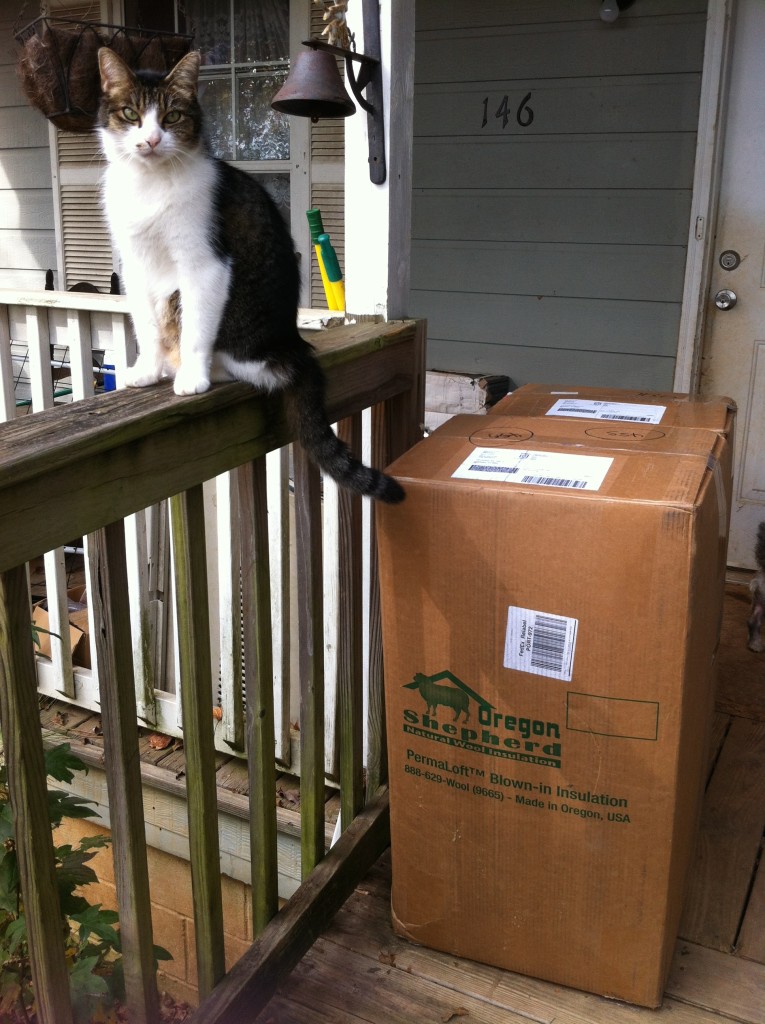
Our two boxes of floor insulation arrive! Also pictured with our late family kitty friend, Milo. RIP, buddy.
Before getting started with the actual process of filling our tiny house subfloor with the fluffy, woolen goodness, I used some canned spray foam (begrudgingly!) to close up the gaps towards the outside edges of the floor between the pieces of framing and flashing. Mom then volunteered to come and help me with the job, so it was cool to get her in on part of the build and was a great mother-daughter project! It was a pretty easy job mostly consisting of breaking apart and fluffing up the insulation, which sorta came packed as compressed chunks. Although easy, it was pretty dusty (as in, little fiber pieces, which easily adhered to everything and flew up nostrils), so we geared up in dust masks and gloves.
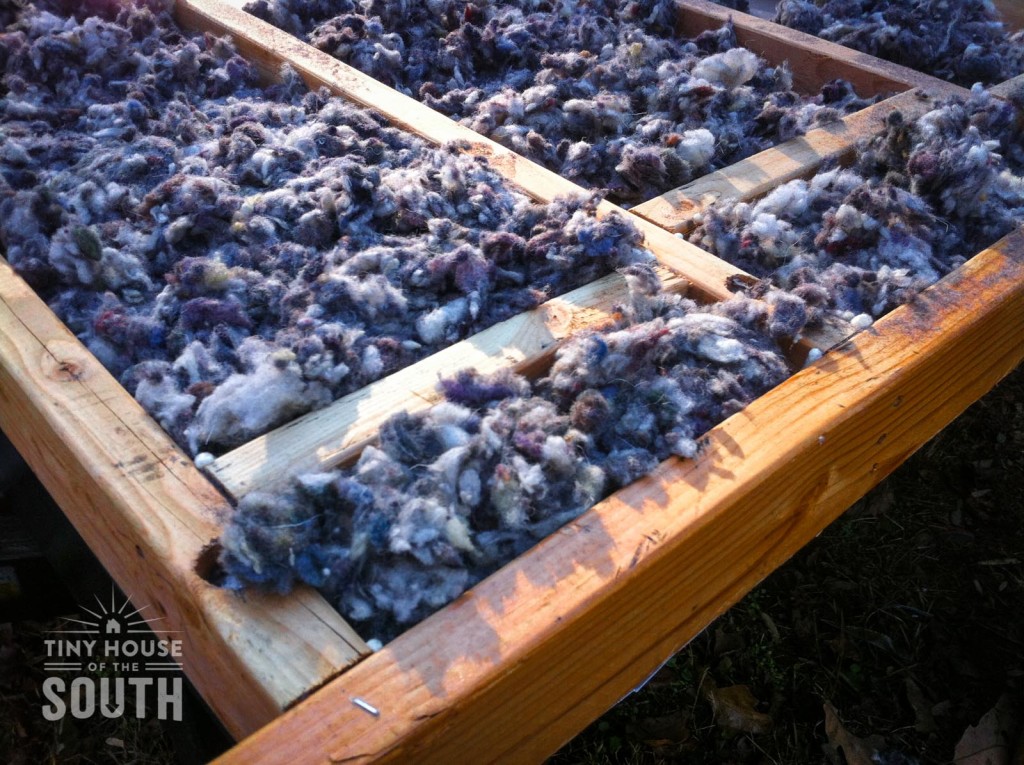
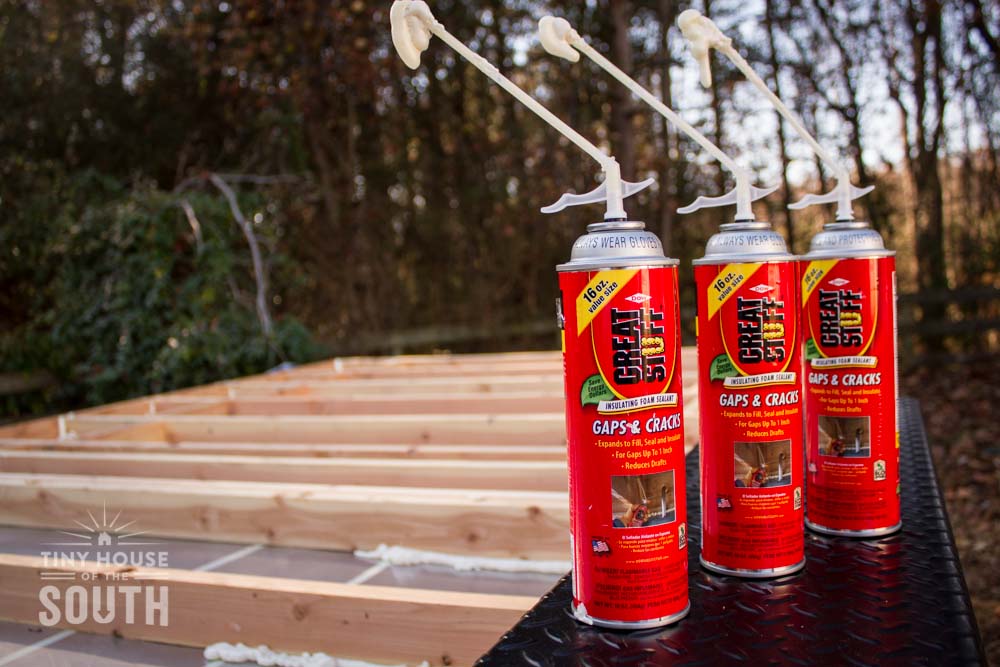
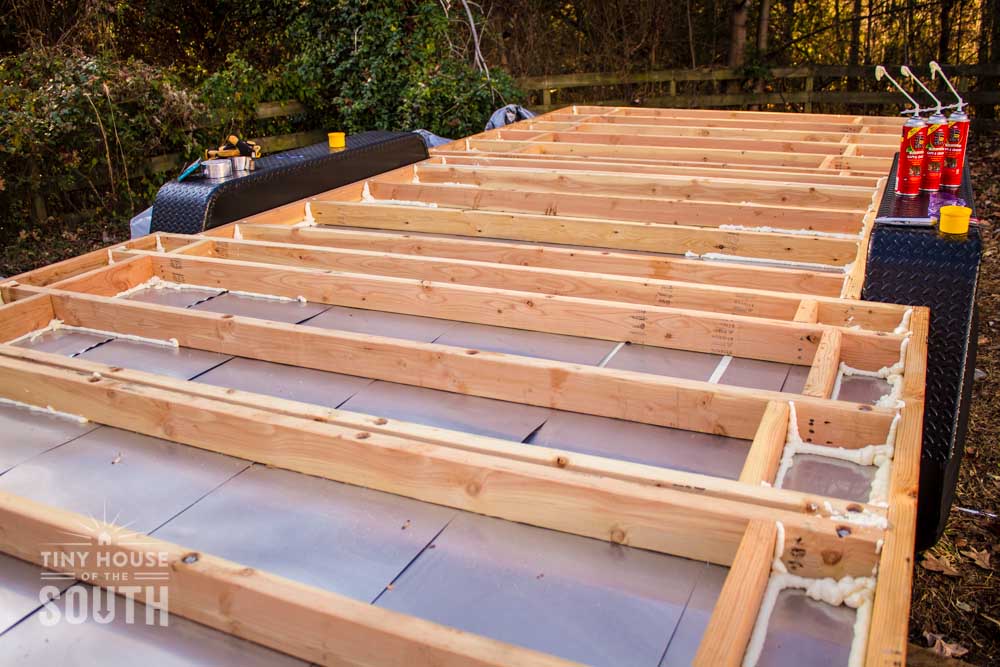
There’s something so cozy and comforting knowing that sheep’s wool will be keeping us warm (and cool) at night. Like a big ole’ woolen sweater wrapped around our little house! PS – here’s a some silly sheep action for your entertainment. Enjoy. ♥
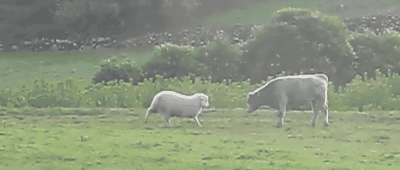
We’ll be posting a timelapse video of the subfloor wool insulation installation soon, so stay tuned!
Recent Comments